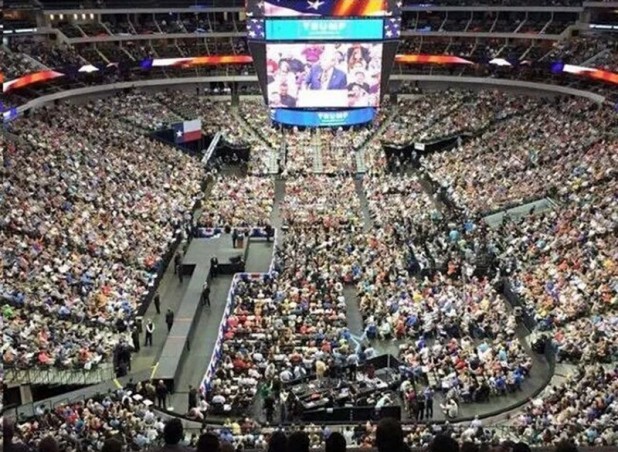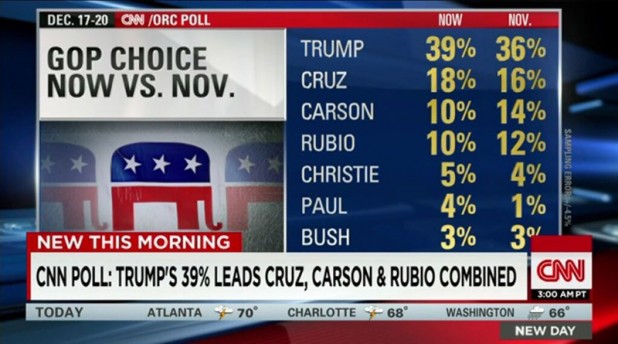The New Observer
December 26, 2015
Donald Trump can only win a US presidential election if a significant number of white non-voters turn out to vote for the first time—and in so doing allow him to take several key states such as Illinois, Indiana, Ohio, Virginia, and Pennsylvania or Florida.
US Presidential elections are not determined by popular vote, but by a system called the Electoral College. Each US state is allocated a number of delegates to the Electoral College, based on that state’s population size. California, for example, has the largest number of Electoral College votes—fifty five—while Pennsylvania has twenty, Montana has three, and so on.
These Electoral College votes are determined on a winner-takes-all basis: any candidate who wins a majority of votes, no matter how slender, takes all that state’s Electoral College votes. It takes 270 Electoral College votes to win a presidential election.
The breakdown of how this system works can be seen in the map below of the 2012 presidential election between Barack Obama and Mitt Romney. Obama took twenty-six states and the District of Columbia, while Romney took twenty-four states. The Electoral College breakdown was however 332 to 206 in favor of Obama.
It is this Electoral College vote distribution which presents the greatest obstacle to Trump. Although he can count on winning all the states take by Romney in 2012 (as Romney won an absolute majority of the white vote), he will have to take at least four or five of the eastern seaboard states if he hopes to reach the 270 Electoral College vote threshold.
It can be presumed that the states which are the most heavily overrun with Hispanic invaders—such as California—will return all of its Electoral College votes for the Democratic Party candidate (likely to be Hilary Clinton).
Bearing in mind that at least 800,000 new Hispanic voters are being added to the voters’ roll every year, the only way that Trump will be able to win the extra states is by a massively increased white voter turnout.
White voter turnout in presidential elections has been steadily declining for decades. This is because the “candidates” approved by the controlled system have been increasingly appalling as the years have gone on.
At the same time, nonwhite voter turnout, and especially that of Hispanics, has been steadily increasing. Thus as white voter turnout has declined, total voter turnout—made up of all races—has crept up.
For example, in the 1996 presidential election, voter turnout was only 49 percent of all registered voters.
In 2000, this figure rose to 50.3 percent. In 2004, this rose to 55.7 percent, and in 2008 rose again to 57.1 percent. In 2012, this declined to 54.9 percent.
When it is considered that nonwhites have traditionally a higher turnout rate—because they are the most politicized—it can be concluded that only about half of all eligible whites have turned out to vote since the 1990s.
In 2012, Romney won 59 percent of the white American vote, as opposed to Obama’s 39 percent. In that election, Obama polled 93 percent of the black vote, 71 percent of the Hispanic vote, and 73 percent of the Asian vote.
However—and this is the big however—it is clear that although Romney won the majority of the white vote, nearly 50 percent of whites did not bother to vote at all.
If Trump is able to energize a significant portion (20 percent or more) of these non-voters to turn out to vote, then an Electoral College victory—and the presidency—is within his grasp.
 Daily Stormer The Most Censored Publication in History
Daily Stormer The Most Censored Publication in History





